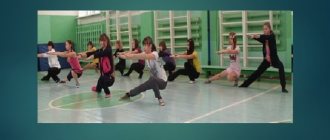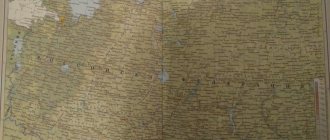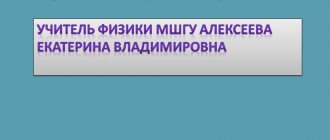Lesson plans 7th grade
Section 1. EXPLANATORY NOTE
This program is compiled on the basis of the following regulatory documents:
1. The federal state educational standard for basic general education was approved by order of the Ministry of Education and Science of the Russian Federation dated December 17, 2010 No. 1897
2. Sample programs for academic subjects. Computer Science and ICT. Grades 7-9: project - 2nd ed. – M.: Education, 2010. – 67 p. – (Second generation standards)
3. Thematic planning of the work program was compiled on the basis of the author’s planning by N. D. Ugrinovich for the basic course “Informatics and ICT” in primary school, posted in the author’s workshop of N. D. Ugrinovich on the website https:// metodist.lbz.ru, recommended Ministry of Education of the Russian Federation in 2008.
4. Curriculum of the municipal autonomous institution Uporovo secondary school
Studying the subject area “Mathematics and Computer Science” should provide:
awareness of the importance of mathematics and computer science in human everyday life;
formation of ideas about social, cultural and historical factors in the formation of mathematical science;
understanding the role of information processes in the modern world;
the formation of ideas about mathematics as part of universal human culture, the universal language of science, which allows one to describe and study real processes and phenomena.
As a result of studying the subject area “Mathematics and Computer Science”, students develop logical and mathematical thinking, gain an understanding of mathematical models; master mathematical reasoning; learn to apply mathematical knowledge when solving various problems and evaluate the results obtained; master the skills of solving educational problems; develop mathematical intuition; gain an understanding of basic information processes in real situations.
The subject results of studying the subject area “Mathematics and Computer Science” should reflect:
The study of computer science in basic school is aimed at achieving the following goals:
· 1) the formation of ideas about mathematics as a method of understanding reality, allowing one to describe and study real processes and phenomena;
· 2) development of skills to work with educational mathematical text (analyze, extract the necessary information), accurately and competently express one’s thoughts using mathematical terminology and symbolism, carry out classifications, logical justifications, proofs of mathematical statements;
· 3) development of ideas about number and number systems from natural to real numbers; mastering the skills of oral, written, instrumental calculations;
· 4) mastery of the symbolic language of algebra, techniques for performing identical transformations of expressions, solving equations, systems of equations, inequalities and systems of inequalities; the ability to model real situations in the language of algebra, examine constructed models using algebra, and interpret the results obtained;
· 5) mastery of a system of functional concepts, development of the ability to use functional graphical representations to solve various mathematical problems, to describe and analyze real dependencies;
· 6) mastery of geometric language; developing the ability to use it to describe objects in the surrounding world; development of spatial concepts, visual skills, skills of geometric constructions;
· 7) the formation of systematic knowledge about flat figures and their properties, ideas about the simplest spatial bodies; development of skills in modeling real situations in the language of geometry, studying the constructed model using geometric concepts and theorems, algebra, solving geometric and practical problems;
·  mastering the simplest ways of presenting and analyzing statistical data; formation of ideas about statistical patterns in the real world and about various ways of studying them, about the simplest probabilistic models; development of skills to extract information presented in tables, charts, graphs, describe and analyze arrays of numerical data using suitable statistical characteristics, use an understanding of the probabilistic properties of surrounding phenomena when making decisions;
mastering the simplest ways of presenting and analyzing statistical data; formation of ideas about statistical patterns in the real world and about various ways of studying them, about the simplest probabilistic models; development of skills to extract information presented in tables, charts, graphs, describe and analyze arrays of numerical data using suitable statistical characteristics, use an understanding of the probabilistic properties of surrounding phenomena when making decisions;
· 9) development of skills to apply learned concepts, results, methods to solve problems of a practical nature and problems from related disciplines using, if necessary, reference materials, a computer, use assessment and estimation in practical calculations;
· 10) formation of information and algorithmic culture; developing an idea of a computer as a universal information processing device; development of basic skills and abilities to use computer devices;
· 11) formation of an idea about the main concepts being studied: information, algorithm, model - and their properties;
· 12) development of algorithmic thinking necessary for professional activities in modern society; development of skills to compose and record an algorithm for a specific performer; formation of knowledge about algorithmic structures, logical values and operations; familiarity with one of the programming languages and basic algorithmic structures - linear, conditional and cyclic;
· 13) developing skills in formalizing and structuring information, the ability to choose a method of presenting data in accordance with the task at hand - tables, charts, graphs, diagrams, using appropriate data processing software;
· 14) development of skills and abilities of safe and appropriate behavior when working with computer programs and on the Internet, the ability to comply with the norms of information ethics and law.
·
The work program provides for the development of general educational skills and abilities in students, universal methods of activity and key competencies. In this direction, the priorities are: the use of various methods (observations, measurements, experiments) to understand the world around us; the use of various sources of information to solve cognitive problems; compliance with the norms and rules of a healthy lifestyle.
The requirements are aimed at implementing competency-based, practice-oriented and person-oriented approaches; students' mastery of intellectual and practical activities; mastering knowledge and skills that are in demand in everyday life, science and technology, allowing one to navigate the world around them and necessary for the labor and professional training of students.
The main form of organization of the educational process is the classroom-lesson system. As additional forms of organizing the educational process under this program, a system of consulting support, individual lessons, and student work using modern information technologies are used. Organization of student support is aimed at:
- creating optimal learning conditions;
- exclusion of traumatic factors;
- maintaining the psychosomatic health status of students;
- development of positive motivation to master the program;
- development of individuality and talent of each child.
The implementation of the goals of the educational program in computer science for the 8th grade is also due to the use of the following technologies in the educational process: game modeling (didactic games, work in small groups, work in pairs in shifts); problem-based learning; person-centered learning.
During the implementation of this program, the following types and forms of control are provided: independent work, testing, mathematical dictations, tests. The forms of recording achievements are: checking notebooks on the subject, analyzing current performance, extracurricular activities - participation in olympiads, mathematical competitions. The level of student preparation at the end of the school year must meet the requirements established by federal state educational standards and the educational program of the educational institution.
This program is a work program in the subject “Informatics and ICT” for 8 grades of a basic level secondary school.
The program is intended for students at the basic stage of general education, designed for 1 year of mastery.
Section 2. GENERAL CHARACTERISTICS OF THE SUBJECT “Informatics and ICT”
This course was created on the basis of personality-oriented, activity-oriented and culturally oriented principles formulated in the 2nd generation standard, the main goal of which is the formation of a functionally literate individual, ready for active work and continuous education in modern society, possessing a system of mathematical knowledge and skills, allowing one to apply this knowledge to solve practical life problems, while being guided by ideological, moral, cultural and ethical principles, and norms of behavior that are formed during the educational process.
When developing the work program, the main ideas and provisions of the Program for the formation and development of educational universal actions (cognitive, regulatory, communicative) for basic general education were taken into account, which were reflected in the formulations of meta-subject and personal results.
To implement this program, pedagogical technologies of level differentiation of training, technologies based on personal orientation are used, which are selected for each specific class, lesson, as well as the following methods and forms of training and control:
Forms of work: conversation, story, lecture, debate, excursion (travel), didactic game, differentiated tasks, mutual examination, practical work, independent work, frontal, individual, group, pair.
Methods of work: explanatory and illustrative, reproductive, problematic, heuristic, research and creative, model, programmed, solving problem-search problems.
Methods of monitoring the assimilation of material: frontal oral testing, individual oral questioning, written control (control and practical work, testing, written assessment, tests), laboratory work.
The educational process is carried out in a class-lesson form in the form of combined, practical-laboratory, test and other types of lessons.
Interdisciplinary connections
The study of the computer science course is closely related to the study of mathematics, geography, physics, Russian language and geometry. It is planned to conduct integrated lessons, as well as introduce competency-oriented, practice-oriented tasks and activity-type tasks into the process of studying subject material.
During the academic year, correction lessons are provided for working on mistakes; knowledge control will be carried out through lessons-seminars, surveys, and checking homework.
This program specifies the content of the standard, gives the distribution of teaching hours by sections of the course, the sequence of studying topics and sections, taking into account interdisciplinary and intrasubject connections, the logic of the educational process, and the age characteristics of students. The work program performs two main functions:
The information and methodological function allows all participants in the educational process to get an idea of the goals, content, general strategy of teaching, educating and developing students using the means of a given academic subject.
The organizational planning function involves highlighting the stages of training, structuring the educational material, determining its quantitative and qualitative characteristics at each stage, including for the content of the intermediate certification of students.
The main problems of mathematics are the study of the objects of mathematical inferences and the rules for their construction, the discovery of the mechanism of logical constructions, the development of the ability to formulate, justify and prove judgments, thereby developing logical thinking.
The study of computer science in grades 8-9 of primary school is aimed at achieving the following goals:
The structure of the goals of studying individual academic subjects is built taking into account the need for the comprehensive development of the student’s personality and includes the acquisition of knowledge, mastery of skills, education, development and practical application of acquired knowledge and skills (key competencies). All presented goals are declared to be of equal value.
At all levels of education, general educational abilities, skills and methods of activity are highlighted, which contributes to both a holistic presentation of the content of school education and its active development.
“The study of computer science and information and communication technologies at the level of basic general education is aimed at achieving the following goals1:
• mastering knowledge that forms the basis of scientific ideas about information, information processes, systems, technologies and models;
reflecting the contribution of computer science to the formation of the modern scientific picture of the world, the role of information processes in society, biological and technical systems;
• mastering the skills to work with various types of information using a computer and other means of information and communication technologies (ICT), organize one’s own information activities and plan their results;
apply, analyze, transform information models of real objects and processes, using information and communication technologies (ICT), including when studying other school disciplines;
• development of cognitive interests, educational interests, intellectual and creative abilities through the development and use of computer science methods and ICT tools in the study of various academic subjects;
• fostering a responsible attitude towards information, taking into account the legal and ethical aspects of its dissemination; selective attitude to the information received;
• developing skills in using ICT tools in everyday life, when carrying out individual and collective projects, in educational activities, and in the further development of professions in demand in the labor market”;
• acquiring experience in using information technologies in individual and collective educational and cognitive activities, including project activities.”
The implementation of this program promotes the use of various forms of organizing the educational process, the introduction of modern teaching methods and pedagogical technologies.
The work program provides for the development of general educational skills and abilities in students, universal methods of activity and key competencies. In this direction, the priorities are: the use of various methods (observations, measurements, experiments) to understand the world around us; use of various sources of information to solve cognitive problems; compliance with the norms and rules of a healthy lifestyle.
Section 3. DESCRIPTION OF THE PLACE OF THE SUBJECT IN THE CURRICULUM
In the curriculum of the municipal autonomous educational institution Uporovo Secondary School, 1 hour per week is allocated for the study of computer science and ICT in the 8th grade, for a total of 34 hours per year.
Section 4. PERSONAL, META-SUBJECT AND SUBJECT RESULTS OF MASTERING THE SUBJECT
The personal results of studying the educational and methodological course “Informatics and ICT” in the 8th grade are the formation of the following skills:
Independently determine and express common rules of behavior for all people in communication and cooperation (ethical standards of communication and cooperation). In independently created situations of communication and cooperation, based on simple rules of behavior common to everyone, make a choice about what action to take. The means to achieve these results are the educational material and textbook assignments aimed at the 2nd line of development - the ability to determine one’s attitude to the world. The meta-subject results of studying the educational and methodological course are the formation of the following universal educational actions. Regulatory UUD: Independently formulate lesson goals after preliminary discussion. Learn together with the teacher to discover and formulate an educational problem. Draw up a plan for solving a problem (task) together with the teacher. Working according to the plan, check your actions with the goal and, if necessary, correct mistakes with the help of the teacher. The means of forming these actions is the technology of problem dialogue at the stage of learning new material. In dialogue with the teacher, learn to develop evaluation criteria and determine the degree of success in performing your own work and the work of everyone, based on the existing criteria. The means of forming these actions is the technology of assessing educational achievements (academic success). Cognitive learning tools: Navigate your knowledge system: independently guess what information is needed to solve a learning task in one step. Select the sources of information necessary to solve the educational problem among the dictionaries, encyclopedias, and reference books proposed by the teacher. Obtain new knowledge: extract information presented in different forms (text, table, diagram, illustration, etc.). Process the information received: compare and group facts and phenomena; determine the causes of phenomena and events. Process the information received: draw conclusions based on generalization of knowledge. Convert information from one form to another: compose a simple plan for educational and scientific text. Convert information from one form to another: present information in the form of text, tables, diagrams. The means of forming these actions are the educational material and textbook tasks aimed at the 1st line of development - the ability to explain the world. Communicative UUD: Convey your position to others: formulate your thoughts in oral and written speech, taking into account your educational and life speech situations. Convey your position to others: express your point of view and try to substantiate it by giving arguments. Listen to others, try to accept another point of view, be willing to change your point of view. The means of forming these actions is the technology of problem dialogue (inducing and leading dialogue). Read textbook texts aloud and silently and at the same time: conduct a “dialogue with the author” (predict future reading; pose questions to the text and look for answers; test yourself); separate the new from the known; highlight the main thing; to make plan. The means of forming these actions is the technology of productive reading. Negotiate with people: performing various roles in a group, cooperate in jointly solving a problem (task). Learn to respect the position of another, try to negotiate. The means of forming these actions is work in small groups.
Subject
w Concept of information, encoding and decoding of information, amount of information, processor, file, graphical interface, computer viruses, computer networks.
must be able to:
w operate with information objects using a graphical interface: open, name, save objects; take anti-virus security measures;
w evaluate the numerical parameters of information objects and processes: the amount of memory required to store information; information transfer speed;
w evaluate the numerical parameters of information objects and processes: the amount of memory required to store information; information transfer speed;
w operate information objects using a graphical interface: open, name, save objects, use menus and windows; take anti-virus security measures.
w mastering the basic concepts and methods of computer science;
w identifying the main information processes in real systems, finding similarities and differences in the flow of information processes in biological, technical and social systems;
w choosing the language for presenting information in accordance with the goal, determining the form of presenting information that meets the given task (tables, diagrams, graphs, diagrams, etc.);







